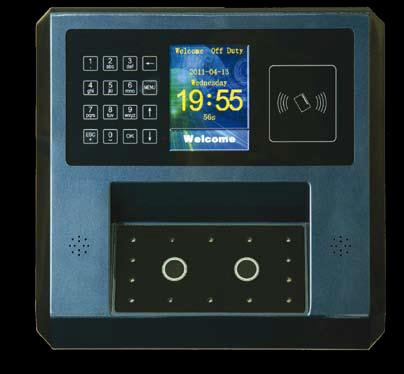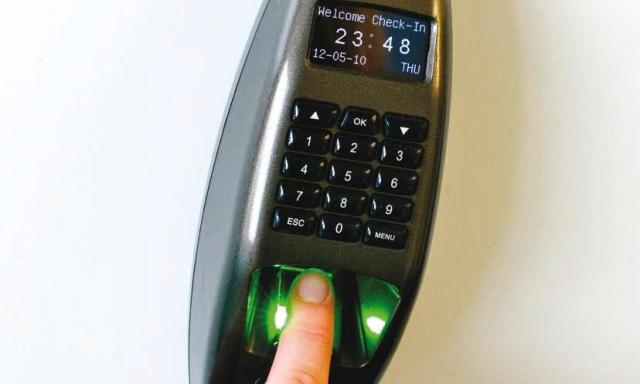Access Control Continues to Innovate by Embracing New Technology in 2014
By John Davies, Managing Director & Mike Sussman, Engineering and Operations Director at TDSi
Last year saw a big rise in integrated systems in the security sector and 2014 looks set to follow this pattern with a number of technologies and trends coming to the fore. The last few years have seen a huge shift in the integration of security, with terms such as PSIM becoming an everyday part of the security specialist’s lexicon. However the pace of change is becoming more subtle at the moment, although no less exciting overall. With Integration of different security, and IT and buildings’ services coming together, 2014 looks set to be a year of evolution rather than revolution - which from a business point of view ideally places the industry in a strong position to maintain growth.
Customers and installers have become much clearer on the types of security solution they want to use, with the desire to find the right price evenly matched by the need to find systems that offer the best value for money and provide ongoing service and the ability to evolve and upgrade. Technologies and ideas that are fresh but can prove themselves to be cost effective and highly effective have become the real Holy Grail for security providers. So the list of trends for 2014 might not always be earth shattering, but many are quietly changing the face of the security industry and look set to become the norm in the not-too-distant future.
Near Field Communications (NFC)
A technology that has been promising to do big things for some time is Near Field Communications (NFC). Whilst the technology for it has been available for some time, NFC’s success will be determined by the tipping point from the number of enabled mobile devices and the public’s willingness to use them to gain secure access to secure doorways. However the use of NFC has also been spurred on by a number of new compatible stand-alone locks which are especially well suited to access control using a smart device.
At the moment NFC is more popular in the consumer market. For example, landlords can send a key to the smartphone of a tenant which can then be activated or revoked as necessary (without the inconveniences of having to immediately issue traditional metal keys). History has shown us that public acceptance of a technology will push its adoption in the commercial market too, as experience of the technology and trust in its ability is cemented. NFC offers exciting possibilities for securing access and the signs are that the market is poised to increase adoption very soon.

The adoption of cloud-based security is another area that has gained enormous ground in recent years and looks set to continue vehemently in 2014. It’s fair to say there were concerns over the security of using the cloud, voiced by some commentators and potential users when cloud-based access control was first muted.
However, these were largely quashed by a wider acceptance of online use of services such as banking or retail, which have demonstrated that using IP needn’t compromise vital security. There are actually security benefits in that the core systems are physically stored away from premises and can’t be directly influenced by intruders to the building. As well as ease of use and installation, cloud-based services also rapidly roll out updates (which is particularly useful in an emergency situation) ant there is no need to store large servers onsite (which could be attacked or hacked directly) – freeing space and resources. Additionally, scalability is potentially almost limitless and data can be accessed by authorised mobile users at any time.
Security Integration
The momentum of security integration is unlikely to slow in 2014 – in fact it will continue to be a key market driver moving forward. The benefits are unquestionable, with the drive for efficiency savings being the core proposition. It enhances security reaction times – for instance if a door is forced the combined system will sound an alarm, lock-down key areas and direct the security team to the location of the potential incursion. Integration makes installation and upgrades easier and more cost-effective and it makes full use of legacy and existing systems. There is a massive growth in the use of BACnet protocols as well, which are adding a new level of software integration which is helping to move away from the remaining proprietary software that was once commonplace in the security industry.
There has been some debate within the security industry lately about the effectiveness and convenience of using passwords (both for physical to premises and logical access to IT systems). Integrated security systems allow authorised users to minimise the security details they have to memorise and are likely to gain further interest this year because of this advantage. The ability of integrated systems to intelligently provide access also means that workforce management is much easier using integrated security. From managing working hours to activating buildings services only when they are needed (and thus saving energy and resources), integration is providing intelligent solutions that will save real money in 2014.
The increase in mobile working and the use of smart devices will also continue to steer security demands, offering convenient and secure access to integrated systems. However mobile devices, by their highly portable nature, also pose a potential risk of unauthorised misuse. Accordingly though, mobile device manufacturers have beefed up handset security and this has offset many of the potential concerns – in some ways echoing developments in the security industry itself. Long promoted as convenient and highly secure, biometrics recently got further mainstream consumer adoption with inclusion of fingerprint readers on iPhones late last year.

This use of biometrics has wider repercussions too. As with mobile devices, experience shows that consumer adoption helps to facilitate business use so I would expect biometrics to find even greater popularity in 2014. The quality and accuracy of biometrics have rapidly improved in recent years, moving on from fingerprint readers and now readily incorporating facial recognition (which is very well suited to ‘clean’ areas) and moving towards previously niche and more complicated systems such as palm vein and heartbeat recognition readers.
Like fingerprints or the shape of the human face, Heartbeat recognition readers use the electromagnetic signature of the human heart which is unique and offers an ideal way to prove identity. Rather than having to present biometric data at an access point for example, systems could be attached to the body, automatically sending approval to entry doors and allowing authorised individuals to freely move between unrestricted and restricted areas with a minimum of fuss. Good access control systems have always been as much about making life easier for authorised individuals as they have for guarding against unauthorised intruders – something which is central to the more towards biometric systems.
Security Legislation
As well as the technology, legislation is moving forward to meet the demands of the security industry. In 2014 we will see the publication of IEC 60839, entitled, ‘Alarm and electronic security systems Electronic access control systems. System and components requirements’ – which aims to update the standard to take into account the latest integrated systems. It is being published at the IEC level (World standard) and also published by BSI as a EN (European) standard. As with all new standards, IEC 60839 will have a profound impact on the security industry in 2014 – pushing providers further towards modern integrated systems and ensuring that they adhere to the developing needs of all customers that rely upon them.



